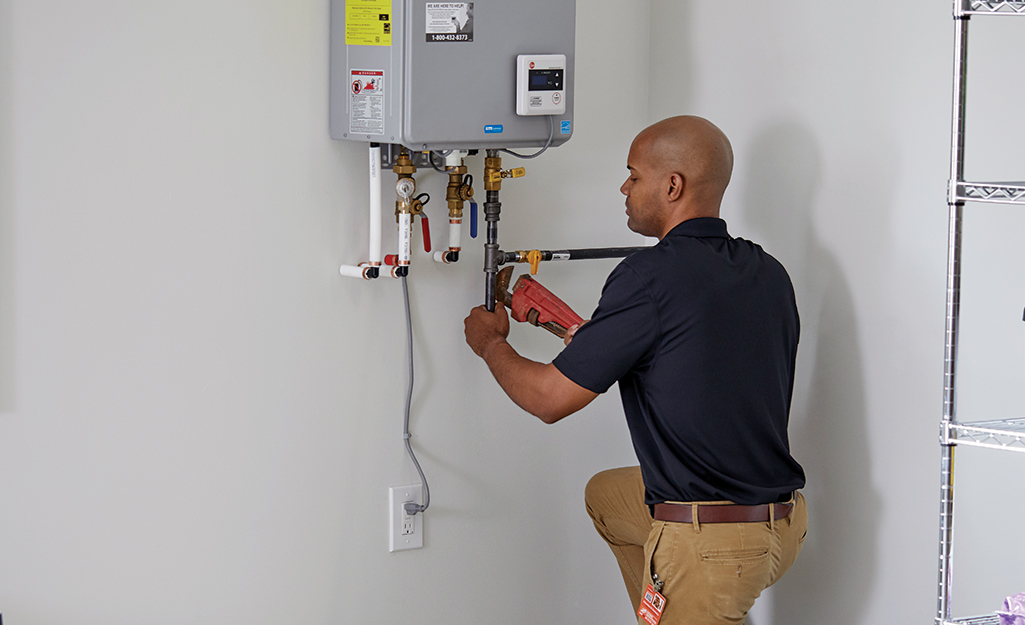Have you been trying to find information and facts around How to Maintain Your Water Heater & Prolong its Life?

Warm water is important for day-to-day convenience, whether it's for a refreshing shower or washing recipes. To guarantee your hot water system runs effectively and lasts longer, routine upkeep is crucial. This article provides functional pointers and insights on exactly how to maintain your home's hot water system to avoid disruptions and costly repair work.
Introduction
Maintaining your home's hot water system may seem overwhelming, yet with a few straightforward steps, you can guarantee it operates smoothly for years to find. This guide covers everything from understanding your warm water system to DIY maintenance ideas and knowing when to call professional assistance.
Value of Keeping Your Warm Water System
Normal upkeep not just prolongs the life-span of your warm water system but additionally guarantees it operates effectively. Overlooking maintenance can bring about decreased performance, higher power bills, and even early failure of the system.
Signs Your Hot Water System Needs Upkeep
Knowing when your hot water system needs interest can stop major issues. Watch out for indicators such as irregular water temperature, weird sounds from the heating unit, or rusty water.
Comprehending Your Warm Water System
Before diving into maintenance tasks, it's useful to recognize the fundamental elements of your hot water system. Normally, this consists of the water heater itself, pipes, anode poles, and temperature level controls.
Month-to-month Maintenance Tasks
Routine monthly checks can help capture minor problems prior to they rise.
Flushing the Hot Water Heater
Flushing your water heater gets rid of sediment build-up, improving efficiency and prolonging its life.
Monitoring and Replacing Anode Rods
Anode rods prevent corrosion inside the tank. Evaluating and changing them when worn is critical.
Inspecting and Adjusting Temperature Settings
Adjusting the temperature level setups makes sure ideal efficiency and security.
Do It Yourself Tips for Upkeep
You can execute numerous upkeep jobs on your own to maintain your warm water system in leading problem.
Checking for Leakages
Routinely check pipelines and links for leakages, as these can cause water damages and greater costs.
Testing Pressure Relief Valves
Testing the pressure safety valve guarantees it operates correctly and protects against excessive pressure accumulation.
Protecting Pipes
Insulating hot water pipelines minimizes heat loss and can save power.
When to Call a Specialist
While do it yourself upkeep is beneficial, some problems call for specialist proficiency.
Complex Concerns Calling For Specialist Aid
Examples consist of significant leakages, electrical problems, or if your hot water heater is regularly underperforming.
Routine Specialist Upkeep Conveniences
Specialist upkeep can include thorough assessments, tune-ups, and making certain compliance with safety criteria.
Final thought
Regular maintenance of your home's warm water system is crucial for performance, durability, and cost financial savings. By adhering to these ideas and knowing when to look for specialist aid, you can make sure a trusted supply of warm water without unexpected disturbances.
How to Maintain an Instant Hot Water Heater
Before tinkering with your hot water heater, make sure that it’s not powered on. You also have to turn off the main circuit breaker and shut off the main gas line to prevent accidents. Also turn off the water valves connected to your unit to prevent water from flowing into and out of the appliance. 2. When you’re done, you have to detach the purge valves’ caps. These look like the letter “T†and are situated on either side of the water valves. Doing so will release any pressure that has accumulated inside the valves while at the same time avoid hot water from shooting out and burning your skin. 3. When the purge valves’ caps are removed, you have to connect your hosing lines to the valves. Your unit should have come with three hoses but if it didn’t, you can purchase these things from any hardware or home repair shops. You can also get them from retail stores that sell water heating systems. Read the user’s manual and follow it to complete this task properly. When the hosing lines are connected, open the purge port’s valves. 4. You should never use harsh chemical cleaners or solutions when cleaning your unit. Make use of white vinegar instead. It should be undiluted and you’ll probably use about 2 gallons. 5. Now flush your water heater. This task should probably take about 40 minutes. We can’t give you specific directions for this because the procedure is carried out depending on the type, model and brand of your heater. With that being said, refer to the user’s manual. 6. When you’re done draining the unit, you have to turn off the purge port valves again. Remove the hosing lines that you earlier installed on each of the water valves. Put the valve caps (purge port) back in their respective places and be very careful so as not to damage the rubber discs that are found inside these caps. 7. Now that everything’s back in place, check your user’s manual again to find out how to reactivate your water heating system. 8. Once it is working, turn one of your hot water faucets on just to let air pass through the heater’s water supply pipes. Leave the tap on until water flows smoothly out of it. https://www.orrplumbing.com/blog/2014/september/how-to-maintain-an-instant-hot-water-heater/

I am just very occupied with Tips on Maintaining a Water Heater and I really hope you enjoyed reading my post. Enjoyed our blog entry? Please quickly share it. Let somebody else check it out. Thank-you for your time invested reading it.
Click Here